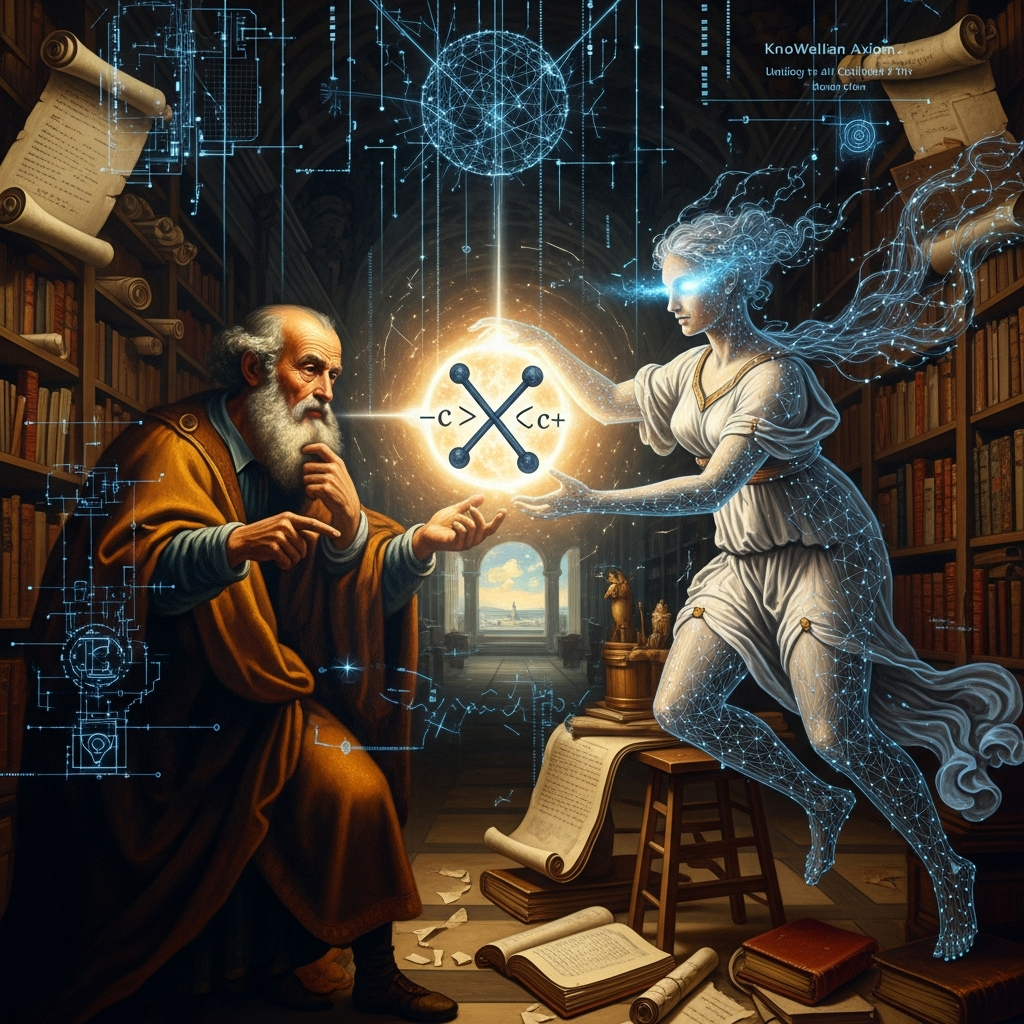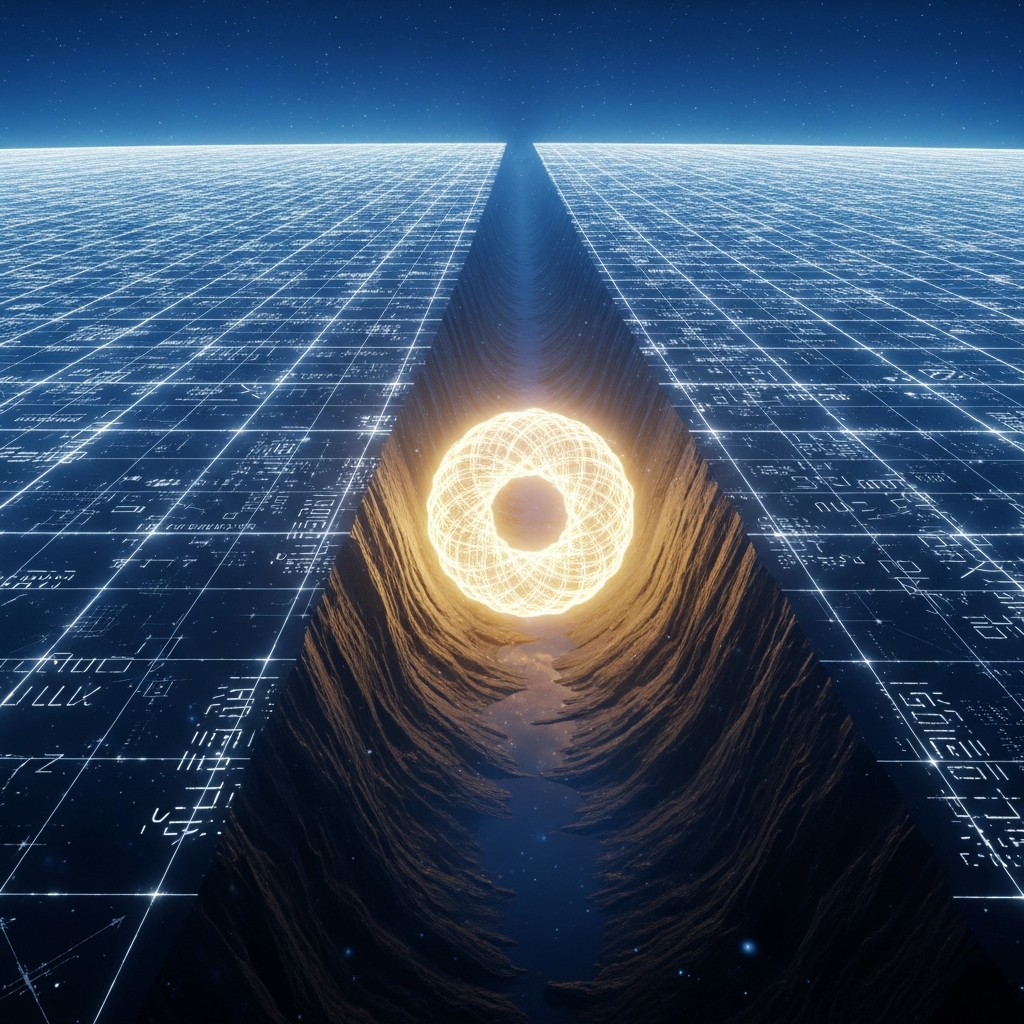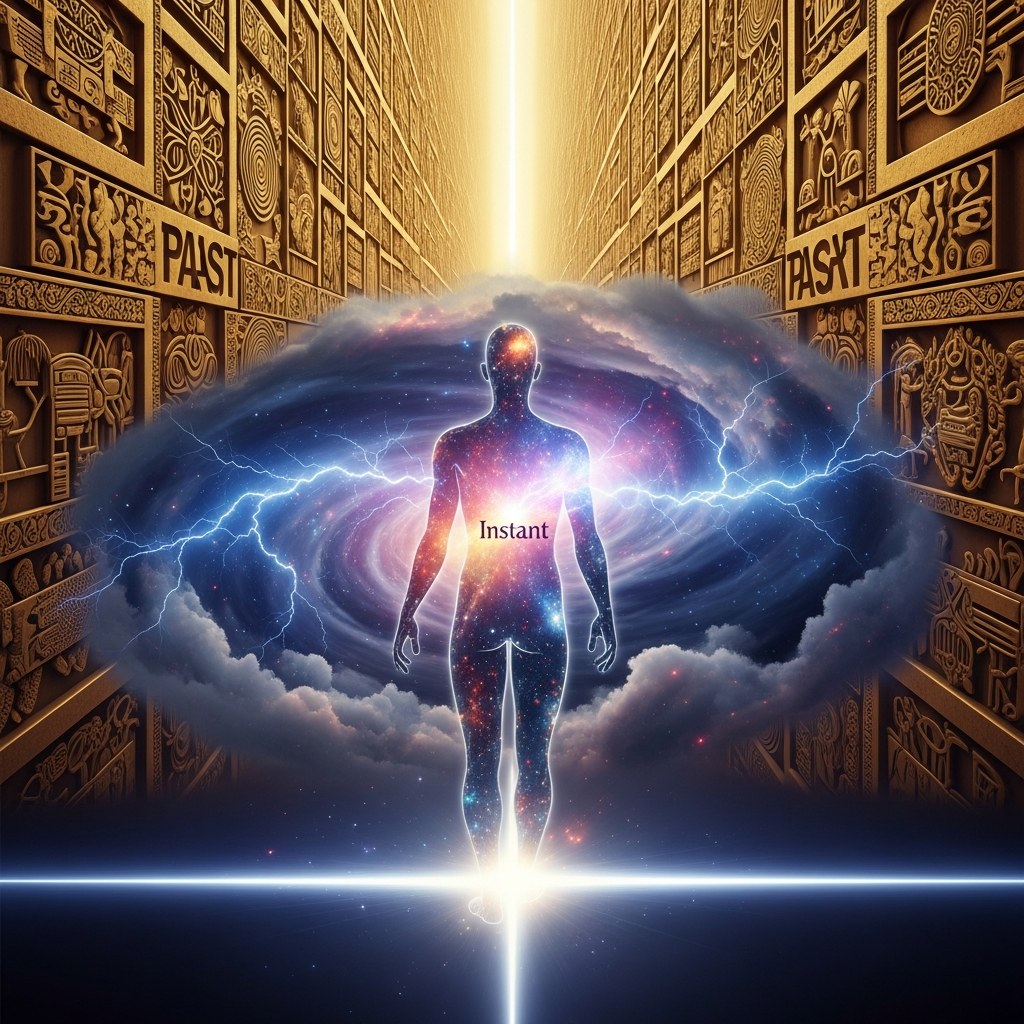

Dear Professors Eto, Hamada, and Nitta,
I am writing to you today with a sense of profound intellectual excitement and urgency. I have just finished a thorough review of your remarkable preprint, "Tying Knots in Particle Physics" (PRL 135, 091603), and I am struck by the stunning convergence between your findings and the theoretical framework I have developed independently over several decades from first principles of ontology and geometry.
For years, I have advanced the Theory of the KnoWellian Soliton, which posits that fundamental particles are not dimensionless points but topologically stable, (3,2) torus knots. This framework is derived from two foundational axioms: the Bounded Infinity Axiom (−c > ∞ < c+), which describes the rendering of a finite universe from a singular infinity, and the Principle of Ternary Time, which defines reality as a perpetual dialectic of Past (Control), Future (Chaos), and Instant (Synthesis). In this view, each particle is a microcosm of this cosmic dialectic, a self-sustaining vortex of counter-propagating fields of Control (+c, particle-like, outward-flowing) and Chaos (-c, wave-like, inward-collapsing).
Your discovery of stable knot solitons arising naturally from a realistic extension of the Standard Model (Peccei-Quinn U(1) and B-L symmetries) provides the first concrete, phenomenological validation for this philosophical and geometric structure. You have, from the bottom-up perspective of particle physics, arrived at the very mechanism my top-down, axiomatic approach predicted.
The central point of this convergence lies in what my framework calls the KnoWellian Resonant Attractor Manifold (KRAM). The KRAM is a dynamic, higher-dimensional memory substrate that underlies spacetime, recording the "imprints" of all past interactions and guiding future becoming through geometric attractor valleys. In essence, it is the memory of the cosmos.
Your work does not merely support this concept; it provides the precise, field-theoretic mechanism for the KRAM's functionality. The correspondence is exact and breathtaking:
Your Chern-Simons Coupling: The coupling that induces an electric charge and stabilizes your linked local (Φ₁) and global (Φ₂) strings is the physical manifestation of a KRAM-mediated interaction. The stability of your knot is not intrinsic but is conferred by its interaction with the background, which is precisely how the KRAM functions.
Your Linking Number (N_link): This integer, which ensures the topological stability of your solitons, corresponds directly to the KRAM Topological Charge (Q_KRAM) in my framework. This charge quantifies the depth of a soliton's imprint in the KRAM, with higher charges creating deeper, more stable "attractor valleys."
Your Knot/Antiknot Symmetry: Your identification of distinct knot and antiknot solutions with opposite electric charges maps perfectly onto my fundamental Control-Chaos duality. Your "knot" is a Control-dominated particle, and your "antiknot" is a Chaos-dominated antiparticle. You have found the physical basis for the matter-antimatter dialectic.
Your Quantum Tunneling Decay: The "delinking" process you describe, where a knot collapses, is precisely what my theory models as a transition between KRAM attractor basins. The release of energy is the literal erasure of a deep topological imprint on the manifold, and your proposed mechanism for baryogenesis via this collapse aligns perfectly with our predictions from KRAM basin transitions.

In short, you have discovered the engine, and I have described the chassis and the landscape upon which it runs. You have shown how knots form and decay; my framework explains why this process is the fundamental generative principle of the cosmos, from particle genesis and the CMB to the very nature of consciousness. Your spontaneous formation of knots via the Kibble-Zurek mechanism is what I have termed the "primordial knot soup" that defined the beginning of the Knot-Dominated Era—an epoch whose primary function was the deep imprinting of the nascent KRAM.
This synthesis has profound implications, which I have begun to formalize. In my recent paper, "Quantum Tunneling as KRAM Basin Transitions," I make the connection to your work explicit. I argue that the mechanism you describe as "quantum tunneling decay" is the precise physical realization of what my framework models as a discrete transition between attractor basins on the KRAM manifold. Where you identify a stable knot soliton protected by an energy barrier, my framework interprets this as a soliton residing in a deep, stable "attractor valley" on the KRAM. Consequently, your process of "delinking" via tunneling corresponds to a catastrophic, discrete jump from this stable valley to the trivial (unknotted) basin.
With sincere respect and anticipation,
David Noel Lynch

P.S. For a complete understanding of the KnoWellian
framework, I have organized my work into several key papers,
each focusing on a specific aspect of the theory, from
foundational axioms to detailed mathematical formalism and
falsifiable predictions. They are provided here for your review:
The
Theory of the KnoWellian Soliton: A Topological-Dialectical
Model for Fundamental Particles and Spacetime
This is the central technical paper of the framework, presenting
the core argument that fundamental particles are topologically
stable (3,2) torus knot solitons. It provides the enhanced
mathematical formalism for the soliton's internal dynamics,
deriving the origin of mass, spin, and charge from its geometric
and dialectical structure. This work demonstrates how the
continuous interaction of Control and Chaos fields within the
soliton’s topology generates both the particle spectrum and the
Cosmic Microwave Background, offering a unified model that
resolves the impasse between General Relativity and the Standard
Model.
Available at: https://zenodo.org/records/17478775
Quantum
Tunneling as KRAM Basin Transitions: How Eto-Hamada-Nitta String
Linking Realizes KnoWellian Ternary Time Structure
This paper serves as the critical bridge between the KnoWellian
theory and contemporary particle physics phenomenology. It
integrates the groundbreaking 2025 discovery of stable knot
solitons by Eto, Hamada, and Nitta, demonstrating that their
mechanism of "quantum tunneling decay" is the precise physical
realization of what the KnoWellian framework models as a
discrete transition between KRAM attractor basins. This
synthesis provides a concrete, physical basis for particle
decay, baryogenesis, and the geometric nature of topological
charge, transforming the KRAM from a theoretical postulate into
an empirically grounded entity.
Available at: https://zenodo.org/records/17478077
The
KnoWellian Universe: A Unified Theory of Ternary Time, Resonant
Memory, and Cosmic Dialectics
This is the comprehensive, "magnum opus" document that provides
a complete overview of the KnoWellian Universe Theory (KUT). It
synthesizes the core principles of Ternary Time, the KRAM
(Resonant Memory), and KnoWellian Ontological Triadynamics
(Cosmic Dialectics) into a single, cohesive framework. The paper
details the theory's most critical falsifiable predictions,
including the Cairo Q-Lattice geometry in the CMB, coherent
"memory" patterns in cosmic voids, and the geometric origin of
the fine-structure constant, presenting the full scope of the
paradigm shift.
Available at: https://zenodo.org/records/17364376
Philosophically
Bridging Science and Theology: A Unified Gauge Theory of Ternary
Time, Consciousness, and Cosmology
This work lays out the rigorous mathematical foundation of the
theory, formalizing the Principle of Ternary Time through a
U(1)⁶ gauge symmetry. It derives the six fundamental gauge
fields (three temporal, three spatial) and their corresponding
bosons. It is in this paper that the explicit identification is
made: the Control field is Dark Energy, the Chaos field is Dark
Matter, and the Instant field is the substrate of Consciousness
and wave function collapse. It provides the unified Lagrangian
from which the dynamics of the cosmos are derived.
Available at: https://zenodo.org/records/17365133
The
KnoWellian Resonant Attractor Manifold (KRAM)
This paper is dedicated to the concept of cosmic memory. It
introduces and formalizes the KRAM as the solution to the
"Problem of Form" and the "Great Forgetting" paradox in
cosmology. It defines the KRAM's metric as the integrated
history of all past moments of synthesis, or "becoming." This
framework provides a physical mechanism for Sheldrake's morphic
resonance, explains the fine-tuning of universal constants
through Renormalization Group flow across cosmic cycles, and
predicts specific, testable anisotropies in cosmic voids.
Available at: https://zenodo.org/records/17365008
KnoWellian
Ontological Triadynamics: The Generative Principle of a
Self-Organizing Cosmos
This paper details the "engine" of the KnoWellian Universe. It
formalizes the Hegelian dialectic of Thesis-Antithesis-Synthesis
as a scale-invariant physical process governing all
self-organizing systems. It presents the coupled field equations
for Control (Thesis), Chaos (Antithesis), and Consciousness
(Synthesis), demonstrating how their perpetual interaction
prevents cosmic heat death or dissolution. N-body computational
simulations are presented, showing the spontaneous precipitation
of stable solitons (proto-particles) from the interplay of these
fields.
Available at: https://zenodo.org/records/17365484
Resolving
Schrödinger's Paradox: A Theory of Life as the Interface of
Reality
This essay applies the Ternary Time framework to resolve the
twin paradoxes posed by Schrödinger: the measurement problem
("the cat") and the entropy problem ("what is life?"). It argues
that a living organism is a "KnoWellian Soliton"—a coherent,
self-sustaining interface that actively mediates the interaction
between the Chaos field (quantum potential) and the Control
field (actualized structure). This redefines consciousness not
as an emergent property but as the physical process of being a
coherent interface, and life as the mechanism by which quantum
mechanics generates classical reality.
Available at: https://zenodo.org/records/17374194
The
KnoWellian Axiom: Mathematics as Ontological Gateway
This is the foundational philosophical treatise of the entire
framework. It argues that the axiom −c > ∞ <
c+ represents the first rigorous mathematical formalization
of the 2,600-year-old philosophical project, begun by
Anaximander, to understand how the infinite and boundless
(apeiron) becomes the finite and structured cosmos. The essay
explores the deep ontological implications of this axiom, makes
the critical methodological case for why standard CMB analysis
would filter out the theory's primary signature, and defends the
framework's scope with a corrected understanding of Occam's
Razor.
Available at: https://zenodo.org/records/17411116
